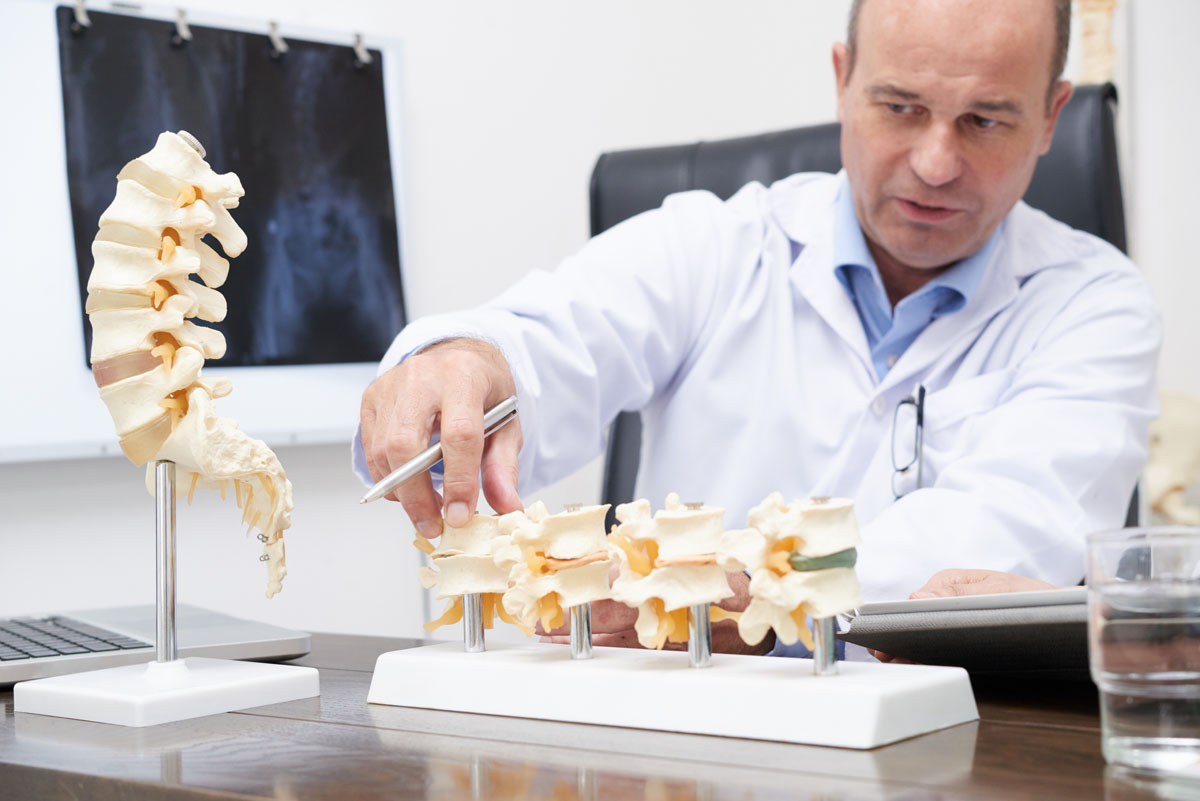
Just about everybody’s spinal discs display signs of deterioration as they get older. Not everybody, nevertheless, is going to have degenerative disc disease. Not an actual disease, this is an ailment in which a damaged disc is the cause of pain.
Spinal Discs
The discs act like buffers between the bones in the spine and are designed to assist the back stay adaptable while resisting tremendous forces in many various planes of motion. The discs have two parts:
- A strong, robust outer layer, an anulus fibrosus. The outer area of this layer has nerves. Should the disc tear in this region, it can turn incredibly painful.
- A delicate, jellied core, the nucleus pulposus. This area of the disc has proteins that can cause the tissues they contact with to become tender and swollen. Should these proteins seep out to the nerves of the overlay of the disc, they could cause an incredible amount of pain.
Dissimilar to other tissues of the body, the discs have a very low blood supply. After a disc is injured, it is unable to repair itself, and a decent of degeneration can emerge with 3 stages that appear to happen over twenty to thirty years:
- Sharp pain makes ordinary movement of the back challenging
- The bone in which the injury happened becomes somewhat unstable. Over an extended period of time, the patient is going to have back pain that is intermittent.
- The body re-stabilizes the injured area of the back. The individual experiences less spells of back pain.
What is the cause of degenerative disc disease?
Different factors can cause disc degeneration, including age. The different factors include:
- The drying out of the disc. When we are born, the disc is around eighty percent water. As we get older, the disc will dry out and doesn’t take shocks as well anymore.
- Day-to-day activities and sports, in which can cause tears in the outer layer of the disc. Reaching age 60, a lot of people have some level of disc degeneration. Not everybody at that age has back pain, nevertheless.
- Injuries, which can be the cause swelling, irritation and instability. This can result in lower back pain.
How is this disease diagnosed?
A diagnosis is made on the basis of a physical examination and medical history, in addition to the symptoms and circumstances in which the pain began. A MRI can display injury to discs, but it alone in unable to verify degenerative disc disease.
How is this disease treated?
- Treatment options can comprise of:
- Disc replacement with an artificial one
- Surgical involvement
- Non-operative treatment of symptoms, comprising of acupuncture, back braces and pain management
Jolt PEMF Lab In Scottsdale, AZ
Jolt PEMF Lab provides critical energy the body needs to make new, healthy cells. It is a place to recharge, repair, and maintain optimal health through stimulating cellular repair. PEMF is the science of creating health and addressing the root causes of chronic disease and pain. Jolt PEMF, located in Scottsdale, AZ, simply gives your body the energy it needs to support its own natural healing. Our mission is to transform your health, body, and energy and that through results, PEMF will become the future of healthcare. Contact us for more information today!
More Articles About Health
- Physical Therapy For Lower Back Pain
- Rheumatoid Arthritis Vs Osteoarthritis
- What Is Cellular Health?
- What You Need To Know About Red Light Therapy For Weight Loss
- 8 Ways To Fight Depression
- How To Improve Deep Sleep With PEMF Therapy
- How To Slow Aging
- PEMF Therapy For Sports Injuries
- Red Light Therapy Pros And Cons
- PEMF Vs TENS: Similarities And Differences
- PEMF Therapy Near Me
- 10 PEMF Therapy Benefits





